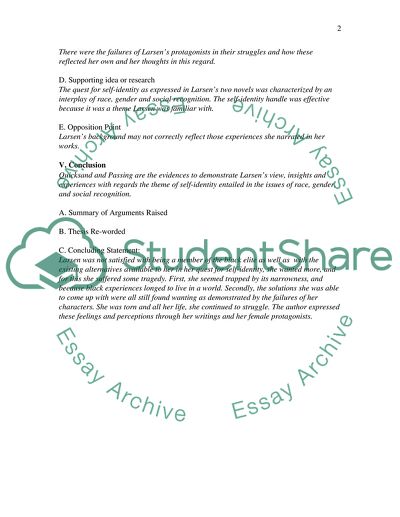Cite this document
(Analyzing the African American Woman: The Writings of Nella Larsen Research Paper - 1, n.d.)
Analyzing the African American Woman: The Writings of Nella Larsen Research Paper - 1. Retrieved from https://studentshare.org/literature/1748914-american-literature-nella-larsen
Analyzing the African American Woman: The Writings of Nella Larsen Research Paper - 1. Retrieved from https://studentshare.org/literature/1748914-american-literature-nella-larsen
(Analyzing the African American Woman: The Writings of Nella Larsen Research Paper - 1)
Analyzing the African American Woman: The Writings of Nella Larsen Research Paper - 1. https://studentshare.org/literature/1748914-american-literature-nella-larsen.
Analyzing the African American Woman: The Writings of Nella Larsen Research Paper - 1. https://studentshare.org/literature/1748914-american-literature-nella-larsen.
“Analyzing the African American Woman: The Writings of Nella Larsen Research Paper - 1”, n.d. https://studentshare.org/literature/1748914-american-literature-nella-larsen.


